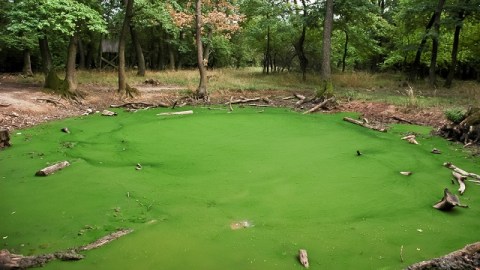Bringing More Pond Scum Into The Energy Game

What’s the Latest Development?
Researchers from the US Department of Energy’s Pacific Northwest National Laboratory examined current water supplies — fresh and salty groundwater sources as well as seawater — to determine how much could be reasonably used by farms dedicated to growing algae for fuel. Their findings, published this month in Environmental Science and Technology, revealed that with the right amounts, enough algae could be grown to create an estimated 25 billion gallons of biofuel, an amount that would cover one month of the country’s yearly fuel demand. A typical algae farm “would likely consist of many ponds, with water maybe six to 15 inches deep.”
What’s the Big Idea?
While various research teams and companies have been hunting for improved methods of creating biofuel from algae, the simple fact of growing the algae must be addressed, and one of the biggest barriers to expansion in this area is the amount of water available. The team estimates that about a quarter of all the water currently used for agriculture in the US would be needed, but that water would come from multiple sources. Freshwater is cheap to access but limited in many areas, and although salty groundwater and seawater are more plentiful, they would require more technology for collection and processing.
Photo Credit: Shutterstock.com





